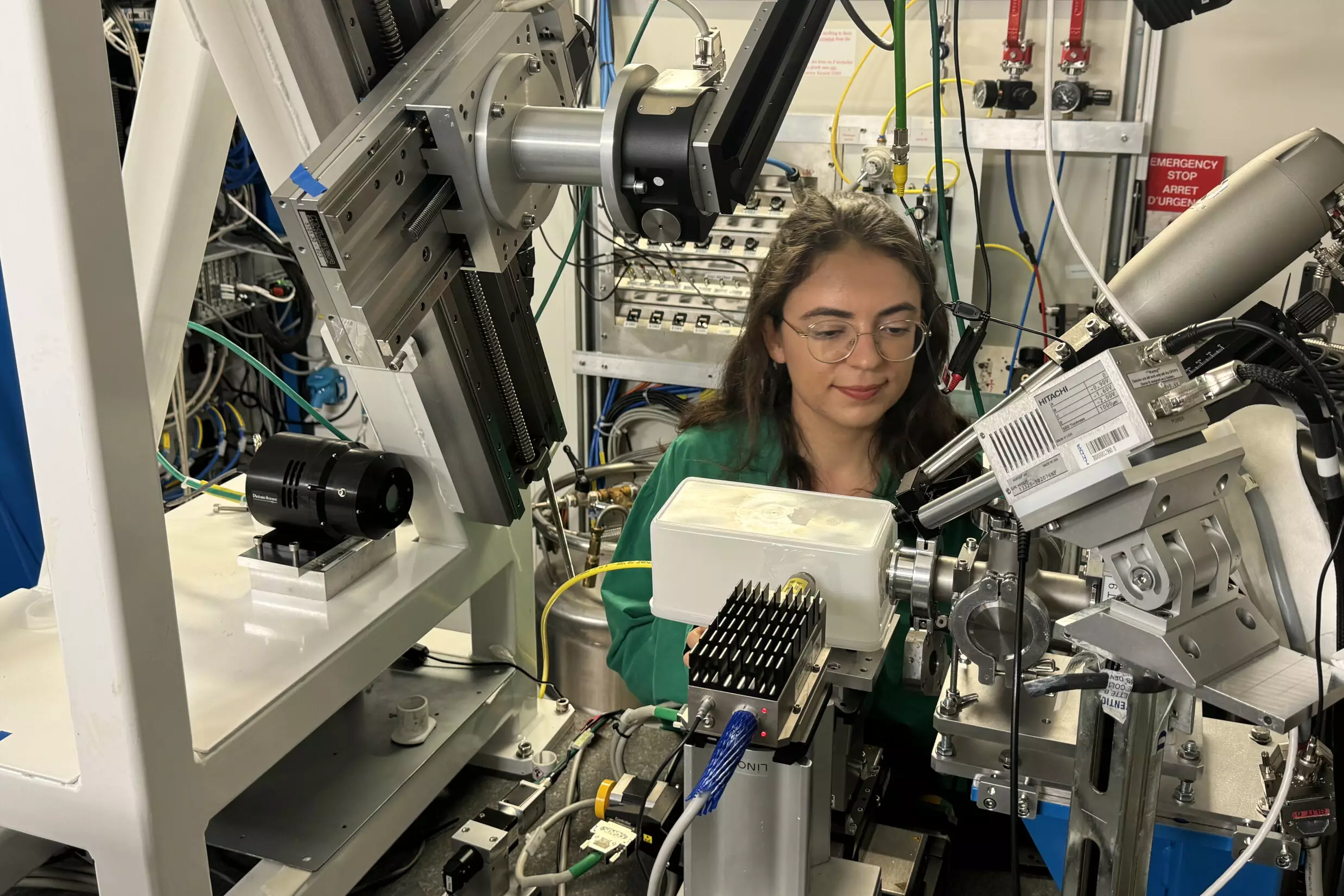Uranium, an actinide element, has long been the focus of scientific inquiry due to its unique and multifaceted chemistry. Not merely notorious for its radioactivity, uranium is also characterized by its intricate electron configurations and diverse bonding properties. The recent study carried out by an international team of scientists at the Helmholtz-Zentrum Dresden-Rossendorf (HZDR) has illuminated new dimensions of uranium chemistry, particularly regarding low-valent uranium compounds. Utilizing synchrotron light at the Rossendorf Beamline (ROBL), the researchers have unveiled a nuanced understanding of uranium’s less common oxidation states, showcasing the intricate dance between electrons that underpins the element’s stability and reactivity.
Investigating the 5f Electrons
A central focus of the research was the behavior of uranium’s 5f electrons, which reside in the inner electron shells but are integral to its chemistry. Ph.D. student Clara Silva emphasizes the significance of these electrons, noting that their interaction with other elements is crucial for understanding uranium’s complex chemistry. Low-valent uranium compounds, which possess a higher electron count in their inner shells, provide a fertile ground for exploring the unique properties of uranium. The team’s dedicated efforts have been a culmination of 15 years of work, revealing for the first time the elusive three-valent state of uranium, U(III), and how it interacts with elements such as fluorine and chlorine.
Employing advanced techniques like resonant inelastic X-ray scattering (RIXS) enabled the scientists to probe the electronic structure of low-valent uranium compounds with unprecedented precision. This methodology involves bombarding a material with X-rays and analyzing the energy loss as these rays scatter, thus gaining insights into the electronic behavior of the element being studied. The research team also complemented these findings with the high-energy resolution fluorescence detection (HERFD) and X-ray absorption near edge structure (XANES) techniques. Such innovations in methodology not only allowed for the accurate identification of U(III) but also contributed a wealth of data regarding uranium’s emergent bonding characteristics.
Challenges in Studying Low-Valent Uranium
Researching low-valent uranium poses considerable challenges due to its inherent instability compared to more common uranium compounds. To mitigate the risks associated with radioactive elements and maintain the integrity of these delicate compounds, the experiments were conducted in an oxygen-free environment and at significantly low temperatures. The complexity of associated data collections further necessitated the use of sophisticated theoretical models designed to accurately interpret the bonding properties and electronic structures exhibited by uranium.
One of the most groundbreaking revelations from the research relates to the sensitivity of uranium’s 5f electrons to their local environments. The implications of this sensitivity extend into the ionic character of uranium’s bonds, ultimately challenging long-held theories surrounding actinide bonding. This finding not only propels the scientific community toward reevaluating established concepts in actinide chemistry but also beckons further investigations into the nuanced interactions within the family of actinide elements.
While the scientific merit of this research is notable, its practical applications are equally striking. The low solubility of low-valent uranium compounds has significant implications for radiation protection and the management of radioactive waste. By understanding how these compounds behave chemically, researchers can develop strategies to minimize environmental contamination from uranium and enhance the safety measures surrounding radioactive waste repositories. This research, therefore, has far-reaching implications, potentially informing policies and practices concerning nuclear materials.
A Broader Perspective
As the study reveals the complexities of uranium’s low-valent states, the ramifications extend well beyond fundamental chemistry. A deeper understanding of the behavior of low-valent uranium compounds has the potential to refine theoretical models across a spectrum of scientific disciplines. The insights gained can foster advances in nuclear science and environmental chemistry, ultimately leading to innovative approaches to manage hazardous materials and improve public safety measures.
The collective efforts of the international research team demonstrate not only the intricate nature of uranium but also highlight the broader implications of their findings. The work stands as a testament to the vibrant exploration ongoing in the field of radiochemistry—a domain that holds the keys to both advancing scientific knowledge and enhancing societal safety.


Leave a Reply